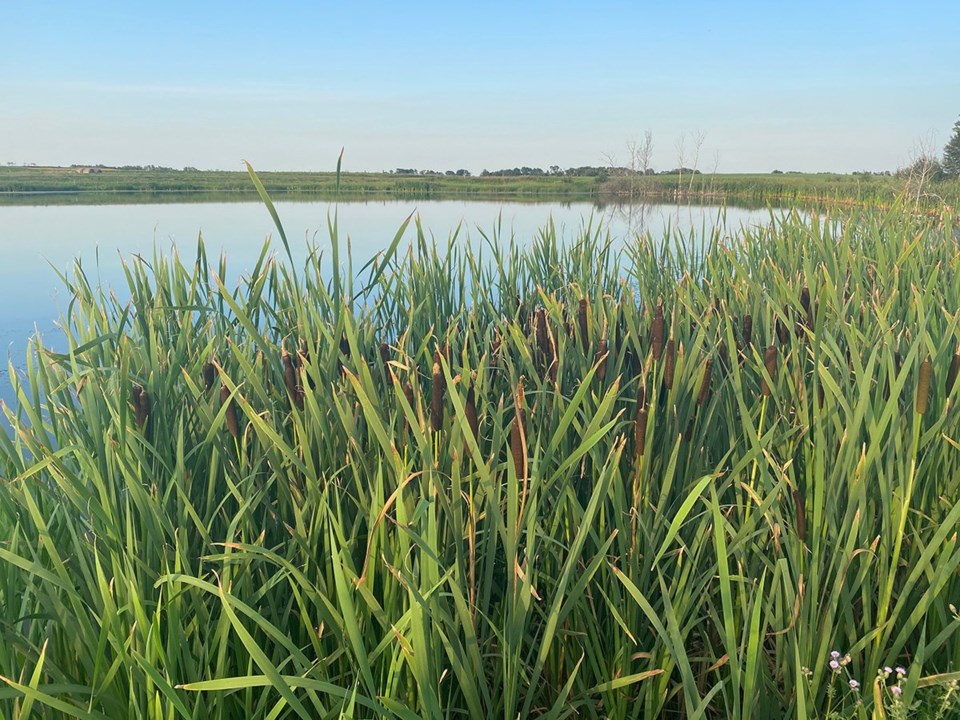SASKATOON — Saskatchewan’s Water Security Agency announced its last week, nine years after regulations first set out the province’s intention to manage drainage.
It appears stakeholders involved in the consultations on both sides of the debate aren’t happy with the final policy.
Those who view drainage as a management tool say they could be hamstrung by parts of it and those who favour wetland conservation say they aren’t reassured that water quantity and quality are addressed.
Krystal Tendler, executive director of agriculture water management at the WSA, said drainage is a divisive topic and the final policy required balance.
“Water is something that people are passionate about on all sides and so we had no shortage of very invested stakeholders who had an opinion on how (the policy) should land,” she said.
“No, probably most people won’t be thrilled, but we hope we’ve landed in a place that everybody can live with it and it’s practical for the landowners who have to implement it.”
The policy sets out requirements for wetland retention within an area. These differ depending on the base amount, or floor, of water already retained.
In most watersheds, 40 per cent of historical wetland area will be retained to address flooding, water quality and habitat impacts.
However, a goal of 60 per cent has been established in watersheds where multiple users are identified, such as communities and recreation, and where water quality concerns have been documented and likely to be influenced by agriculture. These include the Qu’Appelle system, Moosomin Lake and Good Spirit Lake.
“Largely, the wetlands that will help us reach those goals won’t be found on crop-producing land,” Tendler said.
“They’ll be in crown land, in provincial parks, soils and slope classes that wouldn’t be used for food production.”
Landowners will then make up the difference by holding a percentage of their wetlands.
Myles Thorpe, president of the Saskatchewan Farm Stewardship Association, said meeting a 60 per cent retention goal could be difficult on a practical basis.
“We don’t fully understand exactly what that means for acres per field, or anything like that,” he said.
“That will come out when you’re getting approvals and things, but in some of those areas it might be asking a bit too much for farmers to still be able to manage their ag zone land in the manner that they need to.”
He said most SaskFSA members, who promote water management, are open to retaining some water but want to be able to farm the land that is best suited for crop production. Drainage is a tool to reduce input use and improve soil health, he said.
Thorpe said the challenge is that the floor is permanent wetland — essentially land that is never going to be drained or managed. It’s more difficult to get to the retention goal in an area that has, for example, a floor of 30 per cent that has to reach 60 per cent.
“There’s a large burden on the individual landowner to make up that difference,” he said.
He also said farmers who can’t reach the goal should be able to incorporate some other best management practices such as hold-backs to prevent flooding that would still benefit the general public, even if it doesn’t meet the retention goal.
“We want a policy that works for landowners and for the public,” Thorpe said.
Alice Davis from Citizens Environmental Alliance Saskatchewan said the policy contains many holes from her group’s perspective, including the lack of a wetland conservation strategy. She said including creeks, rivers and lakes in the floor seems “unbelievable.”
She said the pilot projects on which much of the policy was based aren’t finished yet.
“We don’t even know if they’ve upheld the obligations to the Indigenous communities,” Davis said.
She said she is still waiting for answers to a list of questions she sent to WSA.
The policy will be enforced on a risk-based approach, Tendler said. Prescribed timelines have been added to resolving requests for assistance, and WSA is now auditing a certain number of projects each year to be sure they are in compliance.
In addition to the policy, WSA also said it will spend $1 million over the next three years on further research and monitoring of the policy. The agency will publicly report on six key indicators set out in the stewardship document.
WSA president Shawn Jaques said in a news release the policy is a made-in-Saskatchewan approach.
“The policy will support flood prevention and protection of water quality and wetland habitat while still allowing drainage to be used as a tool to improve farm efficiency and productivity, as well as soil health,” he said.
The policy is effective immediately for projects that weren’t yet in the approval process. After Jan. 1, 2026, all projects will be required to retain wetlands. Previously approved projects will be subject to the new policy when up for renewal.
Contact [email protected]
About the author
Related Coverage




